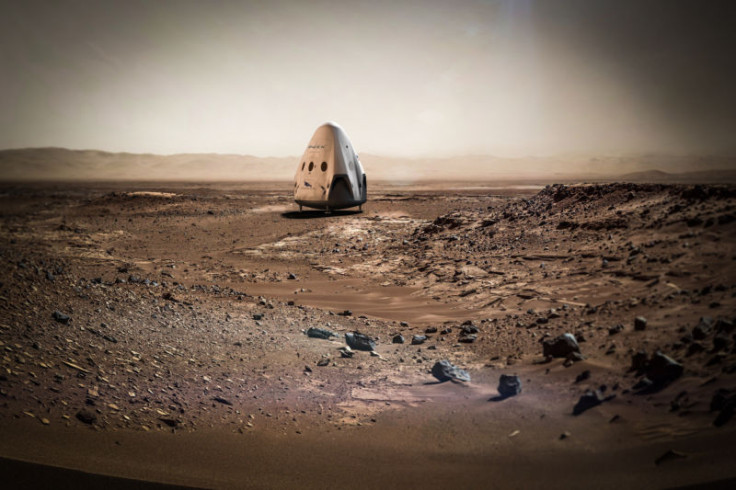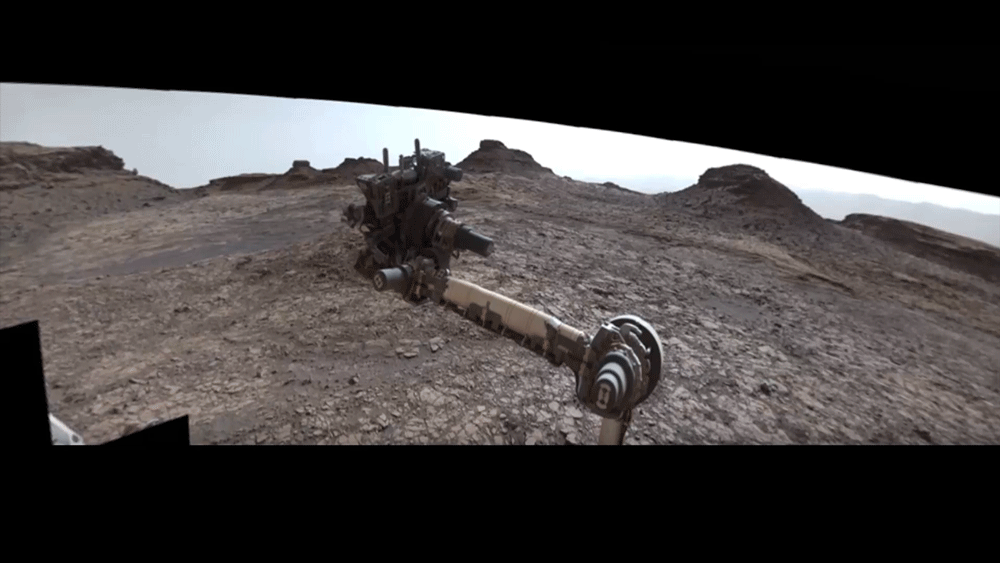Elon Musk wants humans to avoid extinction by colonising Mars - so can we become Martians?
Life on Earth may not be enough for the long run. Here's what we need to do to colonise Mars.
Allow me to recommend a summer adventure on Mars: enjoy stunning vistas on the red planet while trekking to the top of the largest volcano in the solar system, Olympus Mons. Explore the vast equatorial canyons of Valles Marineris. Have a lie-in every morning thanks to the longer day, and allow the reduced gravity to work wonders on your personal high-jump record. As a holiday destination, this rocky world is hard to beat, and all we need to figure out is how to actually get you there.
And back. Possibly.
Elon Musk of SpaceX wants to get you there along with a million others. He recently summarised his plan, or at least his vision, in an article called 'Making Humans a Multi-Planetary Species' in the journal New Space.
The goal: nothing less than a self-sustaining civilisation on Mars within the next century. And although he can express it succinctly, he will also admit that realising this vision is a project of gargantuan scope, unprecedented in human history.

From the outset, Musk states that the purpose of his proselytising is not to present a detailed roadmap to Mars, but to share his passionate belief that this really is an achievable aim. Drawing on humankind's long tradition of exploration, and the more immediate history of Nasa's Apollo moon missions, Musk wants to persuade us that this is not a single insurmountable goal. He sees it as a series of challenges that, if we overcome them, would put us on the correct trajectory to become a space-faring species.
SpaceX already has plans for new spacecraft, and a multi-launch approach to any trip. Passenger-carrying craft will launch into Earth orbit to be refuelled by tankers, enabling the ship to make an onward journey to Mars. Crucially, the destination must be a source of fuel production if any spacecraft wants to make it back: the launch 'cost' from low-gravity Mars will be far less than on Earth. But a round trip requires that we find and make use of significant resources on the Martian side.
The ships themselves may carry more than 100 passengers at a time, according to Musk's plans. The numbers required for a self-sustaining colony on Mars may in turn demand 1,000 ships travelling to and from the red planet on a strict timetable of realisable launch dates determined by the orbits of Earth and Mars around the Sun.

Regardless of technological advances, the inescapable mechanics of the planets will have a huge impact on the flow of traffic between them. There would be significant differences in journey length for different missions: travel time will be in the order of months, though it is hoped that could come down to a matter of weeks as the spacecraft improve.
Landing on Mars is a matter of aerodynamic deceleration and reliance on the spacecraft's heat shield, as well as a controlled engine burn to land slowly. This itself will be no mean feat. An attempt last year to land the Schiaparelli probe on Mars ended catastrophically.
But assuming all goes well, passengers will depart the spacecraft after landing, and refuelling begins for the return trip to Earth. Not only would we want a robust and reliable launch-and-return procedure, but SpaceX believes that the only way to make the plan close to affordable is to create spacecraft that can be reused many times. Each aspect of every mission, individually taxing though it may be, is simply a small part of a changing, advancing, growing undertaking to create a permanent presence on another world. Not holiday-makers after all then, not visitors or tourists but Martians.

And for the new inhabitants? Despite its attractions and superficially Earth-like characteristics, Mars presents some rather fundamental problems for human explorers. The atmosphere is an unbreathably thin poisonous chemical mixture rich in carbon dioxide. The average temperature is lower than -60C. Meanwhile, the surface is bombarded with intense ultra-violet light, and the lower gravity is likely to have long-term consequences for all manner of aspects of your physical health. A Martian city would be an enclosed, sheltered environment, possibly underground for extra shielding and demanding a strict level of control to protect its occupants from the natural environment.
Even at first glance then, any proposal to take even a small part of humanity to Mars seems daunting. Travelling further than ever before, to a largely inhospitable world, in devices at the edge of our technology and understanding, is ambitious. Possibly foolhardy. Yet Elon Musk answers those doubts by suggesting the alternative in his article: that we stay Earth-bound, on course for one extinction-level cataclysm or another to finish humanity's story. Surely better to attempt to expand our reach beyond the ancestral home, and into the vastness of the solar system.
Edward Bloomer is an astronomer at the Royal Observatory Greenwich.
© Copyright IBTimes 2025. All rights reserved.





















